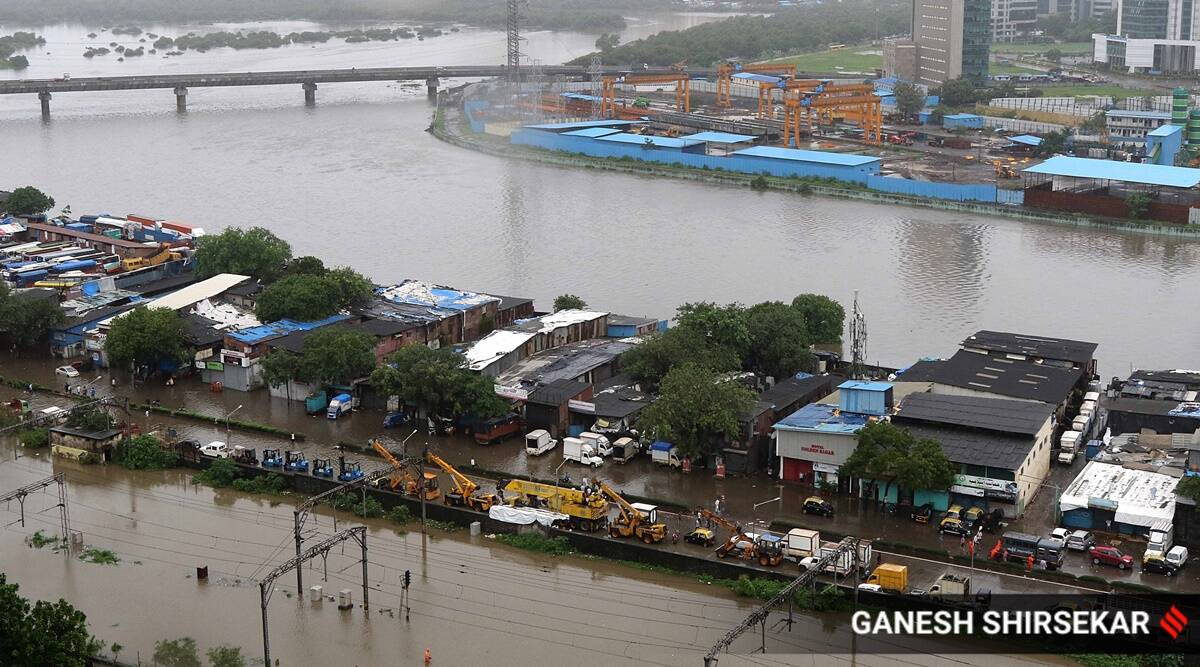 A total of 43 parameters are considered to calculate WQI, of which pH level, dissolved oxygen, biochemical oxygen demand (BOD) and faecal coliform are four core parameters. (File)
A total of 43 parameters are considered to calculate WQI, of which pH level, dissolved oxygen, biochemical oxygen demand (BOD) and faecal coliform are four core parameters. (File) For the past 11 years, the 17.8 km long Mithi river that originates at Vihar Lake, within the precincts of Borivali National Park, has remained ‘polluted to heavily polluted’, the state pollution control board’s water quality status report has found.
The year 2012-13 was the only exception in the past 11 years when the water quality of the Mithi river fell in the non-polluted category. The Mithi traverses through slums, squatters, industrial and residential complexes of Powai, Saki Naka, Kurla, Dharavi and Vakola before ending at Mahim creek and finally into the Arabian Sea, which is filled with water hyacinth, garbage, plastic and sewage.
Mithi river continues to remain a cause of concern despite years of desilting and cleaning exercises. In early 2021, Brihanmumbai Municipal Corporation’s (BMC) standing committee gave its approval for the construction of tunnels to prevent the discharge of raw sewage and wastewater into the Mithi river. However, the project is pending environmental clearance.
The report on the Water Quality Status of Maharashtra 2020-21 was published by the Maharashtra Pollution Control Board (MPCB) this week. MPCB measured pollution levels using the water quality index (WQI), which provides a single number on overall water quality.
A total of 43 parameters are considered to calculate WQI, of which pH level, dissolved oxygen, biochemical oxygen demand (BOD) and faecal coliform are four core parameters.
While 38 or less is ‘bad to very bad’ or heavily polluted (red), 38-50 is ‘bad’ or polluted (orange); 50-63 is ‘medium to good’ or non-polluted (yellow); and 63-100 is ‘good to excellent’ (green). The overall WQI of Mithi river for the year was 44, falling in the polluted category.
The Mithi and Mahim creek, into which the river flows, were the only two listed water bodies in the city which were heavily polluted in April 2020, with pollution levels at 25.84 (Mithi) and 37.55 (Mahim creek). Versova, Juhu, Nariman Point, Gateway of India, Malabar Hill, Girgaum Chowpatty, Haji Ali, Shivaji Park Dadar and Worli Sea Face all recorded levels ranging from 51 and ,58 that is, yellow category or non-polluted in the peak pandemic period of April 2020.
The samples collected from nallas (drains) from Thane and Palghar districts have been consistently recording WQI in the polluted category. This might be due to the release of industrial effluents from nearby areas and waste from human settlements around the nallas, noted the report.
Officials have noted that the discharge of untreated domestic sewage into the sea was one of the main reasons behind the high level of pollution. According to the report, the city generated 2,190 million litres of sewage daily, out of which only 1,285 million litres per day are treated by the seven treatment plants installed in the city.
All seven sewage treatment plants, however, perform only primary treatment before discharging it into the sea. Many parts of the city do not have sewerage networks. So they directly discharge raw sewage into water bodies, like the Mithi river.
- The Indian Express website has been rated GREEN for its credibility and trustworthiness by Newsguard, a global service that rates news sources for their journalistic standards.

